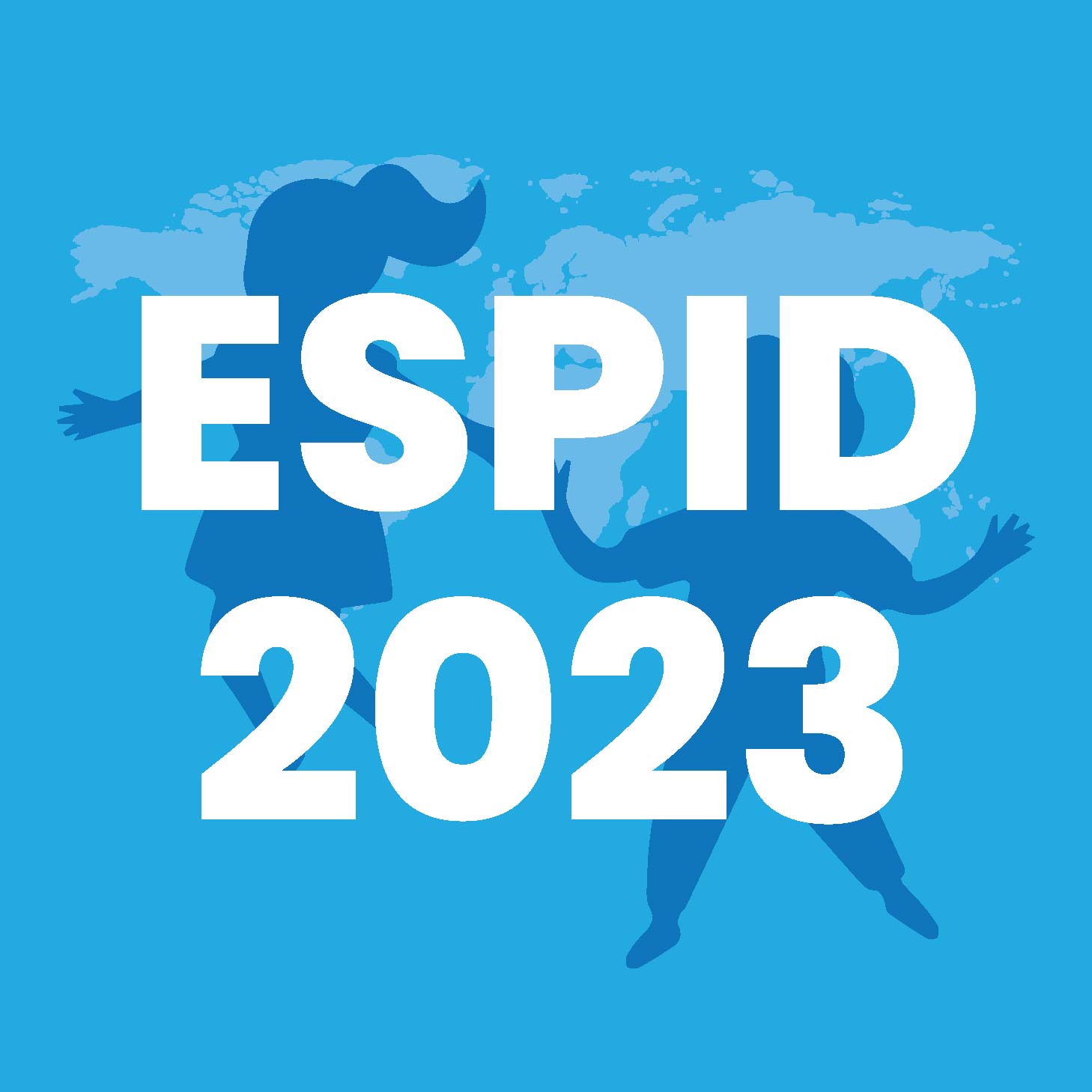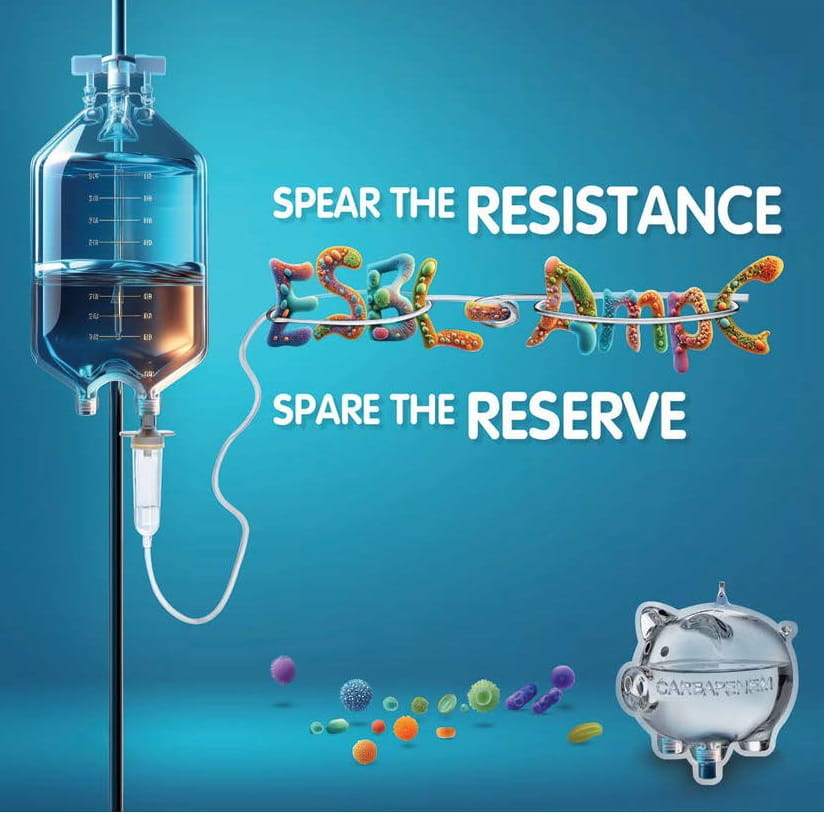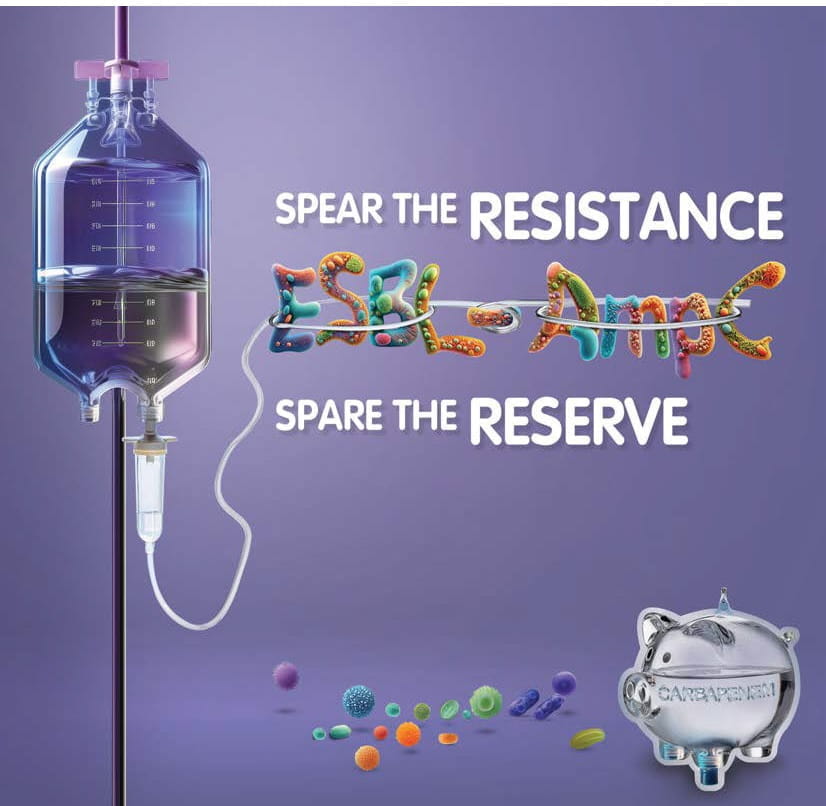The Changing Epidemiology of IMD in the Post-COVID Era – Prof. Ener Çağrı Dinleyici
IMD is caused due to Neisseria meningitidis (N. meningitidis), a 217 years old pathogen, related to sporadic and epidemic infections, with 1.2 million cases and 10% deaths per year. It is preventable by vaccine. IMD and SARS-CoV-2 share similarities in their presenting symptoms. The efforts to reduce risk mobility during the pandemic included mitigation strategies including masks, hand sanitizers, disinfectants, serious curfews, school closures, travel restrictions, etc. But it caused interruptions with healthcare and routine immunizations. After the ease of restrictions, an increase in the number of cases like influenza, RSV and other bacterial infections were noted. During the first year of COVID-19 pandemic, many countries reported lower number of IMD cases. During the post-pandemic era (2022-2023), the cases due to serogroup C and Y increased in the USA with a case fatality ratio of 21%. Cases by new serogroup Y (MenY) since June 2022 were noted with sequence type 1466, median age 39, and high case fatality ratio of 27%. There are 27 isolates of MenY in the USA resistant to penicillin and ciprofloxacin. These isolates have been obtained from non-vaccinated patients of age 1-97 years. France also noted reduced number of IMD cases during the first phase of pandemic and high number of cases post that, especially in serogroup B, Y and W. The French health authorities tried to increase the vaccination in young adults during MenB outbreaks. Similar reports were obtained from the UK and Spain’s surveillance data.
Adolescents are important carrier for IMD. A study in Australia showed no change in meningococcal carriage before and after COVID-19 pandemic and mitigation strategies did not affect ACWY serogroup carriage in adolescents and young adults. The study on influence of pandemic on parents’ attitude and behaviour towards meningococcal vaccination showed that >60% parents reported delayed or cancelled schedule for the vaccination. The reasons included lockdown regulations, concern for catching COVID-19 in public places, and believing that mitigation strategies could prevent meningococcal infections. Despite all treatments and intensive care capabilities, IMD leads to 10% mortality. Therefore, prevention is better than cure because it saves the labour of sick.
Expanding Our Armamentarium against IMD in Children and Adolescents – Prof. Markus Knuf
EU approved meningococcal C and ACWY conjugate vaccines. All meningococaal vaccines have differences according to dose scheduling, protein carrier and pharmaceutical form. Need for MenACWY vaccination: of the 12 identified serogroup of N. meningitidis, 6 are the main causes of IMD globally (A, B, C, W, X, and Y) and the distribution of the serogroups causing IMD varies geographically and with time. During the past decade, an increase in the incidence of IMD due to serogroups W & Y has been observed, thus some countries introduced quadrivalent MenACWY vaccination in their routine national immunization program (NIP) to provide a broader serogroup coverage. In MEQ65 study, 707 healthy meningococcal vaccine-naïve toddlers (12 to 23 months of age) were divided into 3 groups- MenACWY-TT, MenCV4-TT and MenC-TT. Single dose of each vaccine were given. MenACWY-TT had 99.5% seroprotection rate compared to 89.1% with MCV4-TT and GMTs were 515 vs 31.6 (ratio difference of 16.3). For MenACWY-TT and MenC-TT, 100% of seroprotection was observed in both groups, and GMT was 2143 for MenACWY-TT and 1624 for MenC-TT (ratio difference of 1.32). Superiority was demonstrated for MenACWY-TT vs MCV4-TT for hSBA seroprotection rates and hSBA and rSBA GMTs. Superiority for MenACWY-TT was demonstrated vs MenC-TT for rSBA and hSBA GMTs, and non-inferiority for rSBA and hSBA seroprotection rates to meningococcal serogroup C. The safety profiles were comparable between all 3 vaccines. In MET62 study conducted in 91 children between 4-5 years of age that were MenACWY-TT or MCV4-TT primed, received single dose of MenACWY-TT. The subjects achieving hSBA seroprotection rate were similar in both groups, showing good booster response. In MET59 study in population between ≥13 to <26 years of age, 570 participants were divided into 4 groups receiving single booster dose of MenACWY-TT ± MenB vaccine. hSBA seroresponse showed no difference regarding all the four vaccine groups, seroprotection rates were within the same range, but a little better result in MenACWY primed cases compared to MCV4-CRM primed. In conclusion, MenACWY-TT can elicit a robust booster response against all meningococcal serogroups and has an acceptable safety profile. Pre-booster GMTs were higher, indicating long-term persistent immune response. The recently approved MenACWY-TT vaccine can be an alternative for the prevention of IMD in young population.
Improving Awareness and IMD Vaccination Uptake in Younger People – The Role of the Family and Patient Associations – Elena Moya
CoMO (Confederation of Meningitis Organisations) survey in 6 countries in 2017 for adolescents to understand their attitude towards vaccination showed that awareness was high (3 out of 4 had heard about meningitis), but only 1 out of 3 were vaccinated, 1 out of 4 did not know meningitis is contagious. For vaccine information, 56% preferred to receive it from their parents, 78% said doctors were trustworthy. About 70% were not afraid of vaccine, 32% (41% in France) thought they are dangerous and 18% didn’t trust them. The general knowledge of the disease was variable, 86% teenagers in UK and Italy agreed that vaccinations are the best way to protect against meningitis infection. The survey revealed the need to raise awareness about meningitis and vaccine among adolescents. MenACWY is used in most European countries, but France, Germany and Poland are recommending MenC for teens. Awareness campaigns need to be organized in these countries to promote the benefits of whole vaccination. Erasmus program in Europe sends students to other universities in another country for a year, and most teenage students in this program come from France. It is required to reach the authorities with this information to demand full protection for neighbours. Regarding campaigns, the teenagers were reached through tiktok platform to talk about health in Spain, special brochures for students in Sweden, talks in universities in Turkey, and hashtags and virtual presentations in Ireland. Public health authorities in Spain have created awareness hashtags targeting ACWY for teenagers. In conclusion, adolescents can carry and transmit bacteria, they are high risk group that needs protection. According to WHO Global Plan to Defeat Meningitis, we have to protect anyone at any age from meningitis. With patient voice, healthcare professionals and decision makers can protect all adolescents.
41st Annual Meeting of the European Society for Paediatric Infectious Diseases (ESPID), 8-12 May, 2023

.svg?iar=0&updated=20230109065058&hash=B8F025B8AA9A24E727DBB30EAED272C8)


